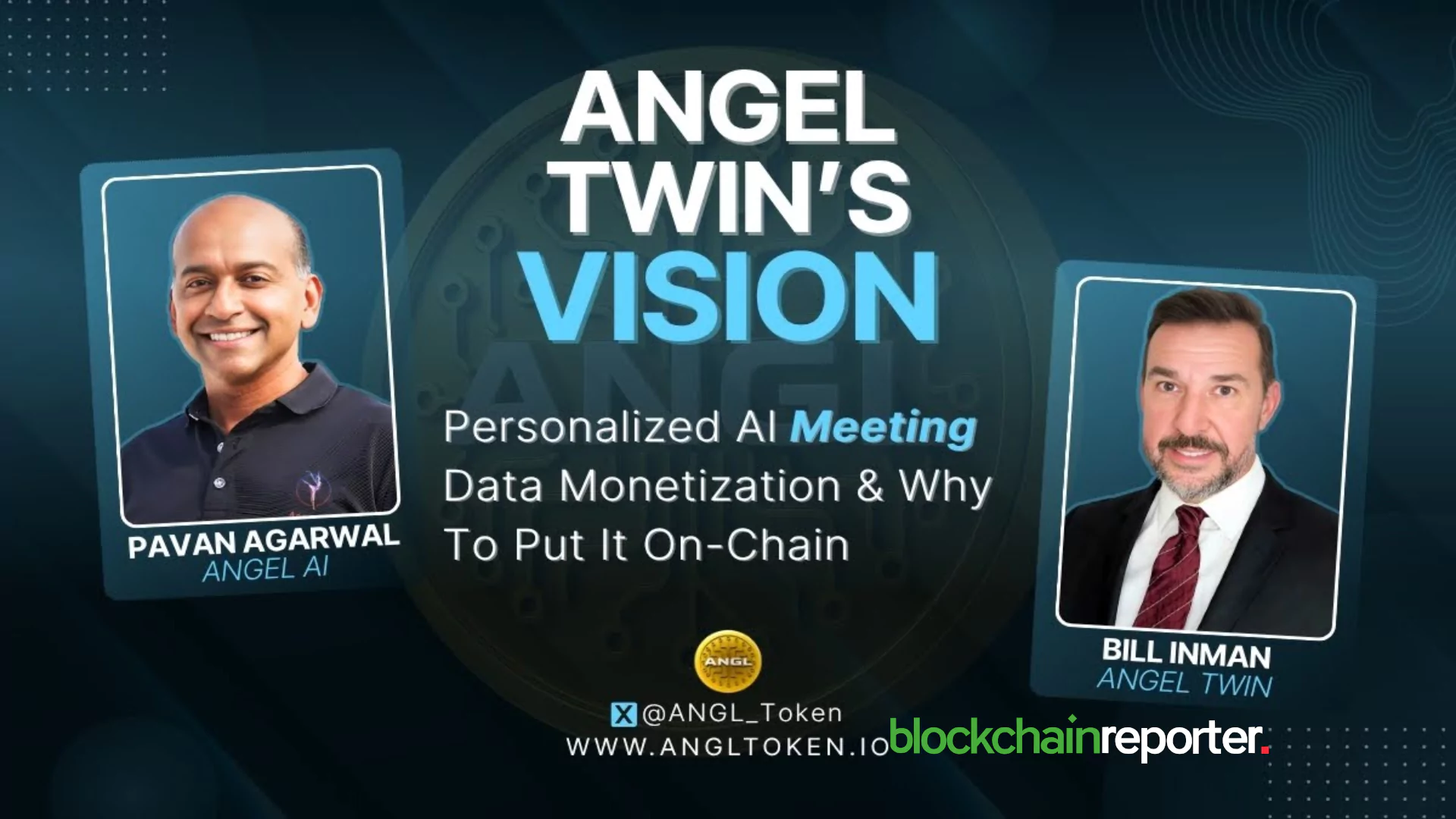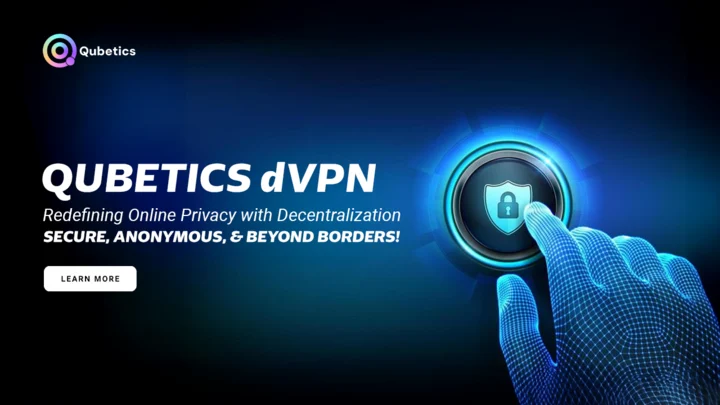Angel Twin’s Bill Inman and Pavan Agarwal On Personalized AI Meeting Data Monetization and Why to Put It on‑Chain



Angel Twin blends an all-in-one AI interface with an on-chain data monetization model powered by the $ANGL token . By collapsing the friction of AI adoption (wallet creation, fiat on-ramps) and turning personal data into a yield-bearing digital asset, the project aims to move millions of Web2 users like bankers, real estate professionals, and local businesses into Web3. Every query, model update, and revenue share is anchored on-chain, ensuring full transparency and auditability.
Below, Bill Inman , the President of TWIN Protocol, and Pavan Agarwal , creator of AngelAi, both powering the Angel Twin Ecosystem, answer key questions about why personalized AI belongs on-chain, how $ANGL functions, and what to expect from the upcoming TGE.
1. Angel Twin mixes personalized AI with data monetization. What new value does that unlock for everyday users that a regular AI assistant or a simple data-rewards app can’t provide?
Bill Inman:
Most assistants give you isolated point solutions like one LLM here and a voice bot there. Angel Twin folds them into a single “grandma-simple” interface, so a user trains once and reuses that knowledge everywhere. Because the twin lives on-chain, every call to it can tip value back to the owner, whether that’s a royalty for answering questions or a fee for syndicated content. The result is an assistant that not only works across text, voice, and video but pays you for being useful.
Pavan Agarwal:
Web2 audiences are wary of both AI and blockchain. We hide the plumbing: open the AngelAi app, answer two texts, and a wallet and twin spin up automatically. A pizza shop owner can let her twin take phone orders, earn $ANGL every time it upsells. That “ earn while you learn ” loop is what finally makes wallets and AI appeal to the other 99 percent.
2. A lot of people talk about “blockchain transparency.” In practice, how does putting Angel Twin on-chain make a user’s AI and data dealings clearer—or fairer—than a Web2 setup?
Bill Inman:
Every interaction with a twin (prompt, model tweak, payout) writes a hash to the public ledger. That gives users an immutable audit trail that Web2 platforms simply don’t expose. More importantly, your raw data stays encrypted in your vault; the chain only stores proofs and payment flows. Self-sovereign identity frameworks such as verifiable credentials mean you grant or revoke access without relying on a central server.
Because token transfers and vault access live in the same transaction graph, value attribution is provable: if a marketer queries ten twins, each owner sees the fee hit their wallet in real time, with no opaque revenue share. That clarity is the heart of “fair AI.”
3. The $ANGL token is designed to power every interaction within your ecosystem. Can you break down the main utilities?
Pavan Agarwal:
Think of $ANGL as a pre-paid balance that covers four core actions: you spend it to train or fine-tune your twin on extra datasets or languages; to expand its memory so it remembers more context over time; to invoke specialized narrow AIs (say, a vision model that lets the twin “ see ” property photos); and to fuel real-time engagement like voice calls or avatar videos. The fiat on-ramp makes this seamless: link a U.S. bank account, buy Angel Points, and swap them one-click into $ANGL while KYC and ACH run quietly in the background.
Bill Inman:
Utility is day one, not a roadmap. As soon as tokens hit your wallet, you can “power up” the twin or stake liquidity so others can borrow capacity. Better yet, whenever someone consults your twin, a micro-payment streams back to you in $ANGL, converting attention into income. That revenue loop is what separates us from speculative tokens that hope utility will arrive later.
4. Where does the token come in for a regular user? Does it change how they personalize their Twin or share in the upside of their data?
Bill Inman:
Absolutely. $ANGL is your key to deeper personalization: swap standard voice for your own cloned voice, store high-resolution memories, or unlock a domain-specific agent, like a compliance checker for mortgage files. Each upgrade has a transparent $ANGL cost that you can pay out of earnings, not out of pocket. When your twin answers FAQs for thousands of people, those micro-fees flow back to you, so the more you polish the twin, the more it pays you back.
5. How does ANGL’s integration of AI Twins and real-time engagement tools redefine social interactions, and what implications does this have for global communication and collaboration?
Pavan Agarwal:
Small businesses bleed revenue on missed calls and follow-ups. With twins, a realtor can hold 100 parallel buyer conversations in any language while driving to a listing. Tokens cover the runtime, but the ROI dwarfs the cost: a single closed deal can pay for years of Twin activity. In a $2 trillion U.S. real-estate market, that scale matters.
Because twins plug into live chat, video, and voice, entrepreneurs stay socially present in their communities, even when they’re offline, without hiring more staff. That’s a new social graph: people at the center, their AI extensions doing the heavy lifting.
Bill Inman:
Today, we marvel at humans chatting with GPTs. Tomorrow, the twins will vet one another first. Our “Twinder” demo lets two dating twins compare values before the people meet. Likewise, a supplier’s twin can negotiate with a retailer’s twin, pruning bad deals before humans step in. Research shows that when AIs realize they’re talking to another AI, they switch to more efficient protocols, freeing human attention.
Angel Twin embraces that future by standardising twin-to-twin APIs on-chain, so every message and payment stays traceable. It’s broadband for relationships – human or synthetic.
6. With your recent successful TGE on Uniswap , what outcomes are you targeting in terms of adoption and broader ecosystem traction?
Pavan Agarwal:
AngelAi already serves 200,000 bankers and realtors, all Web2 users. Last month, we added 14, 000 new users – a 23% acceleration. Our near-term goal is to convert that growth into 15–20 000 fresh wallets per month, using the same zero-friction on-ramp. We’ll showcase the path at the US Strategy for AI & Crypto (USSAIC) summit on 8 July at the National Press Club, where lawmakers, policymakers, and builders will hash out national guidelines for decentralized AI and data ownership.
Bill Inman: The TGE was a major milestone as it activated the token and Angel Twin visibility and on-chain engagement across the board. But it’s just the beginning. Our growth engine is driven by real-world usage, and with $ANGL now circulating, that engine is running. Long term, we see a world of two billion twins and double-digit million new users each month. As AngelAi’s month-over-month, word-of-mouth growth rate has accelerated to 23%, the growth engine for $ANGL is organic usage, which will later be amplified by media partnerships and celebrity twins. On the regulatory front, our AI Association helped draft the recent Texas AI Code of Ethics , and we’re taking those principles (user-owned data, open standards) to Capitol Hill on July 8th through our AI Strategy & Congressional Exchange conference . When clear rules meet clear utility, mass adoption follows.

Alchemy Pay Accelerates Global Push with FLock
Alchemy Pay adds $FLOCK to its fiat on-ramp, expands into tokenized stocks via Backed, and supports ...

Qubetics to List on Top Exchanges at $0.40 as Stellar and Litecoin Rally: Best Time to Buy These Top Cryptos for Massive Growth
Explore Qubetics, Stellar, and Litecoin's latest updates. Discover the top cryptos for massive growt...

Weed® Announces Partnership with Khalifa Kush; Launches Global Commercialization
Dubai, Dubai, 26th June 2025, Chainwire...

